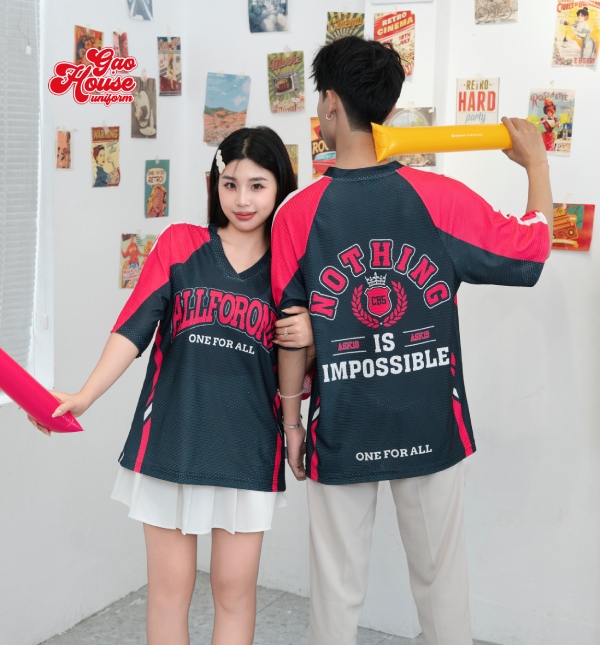dongphuctieuhoc
The Importance of Primary School Uniforms: Why a Well-Designed Uniform Matters
Primary school uniforms are more than just a requirement for school attendance—they represent a key element of the educational experience for young students. As children enter the early stages of their education, the significance of a primary school uniform extends beyond simply adhering to a dress code. A well-designed uniform can have a profound impact on a child’s sense of belonging, identity, and focus, making it an important aspect of the primary school environment. This article explores the benefits of primary school uniforms, highlighting how they contribute to personal growth, social inclusion, and academic success for young learners.
See more : https://gaohouse.vn/blogs/suc-khoe-doi-song/cau-kinh-tinh-yeu-moc-chau
A Sense of Unity and Equality Among Primary School Students
A Sense of Unity and Equality Among Primary School Students
One of the most notable benefits of primary school uniforms is their ability to create a sense of unity among students. When every child wears the same uniform, differences in socio-economic status are minimized. In a classroom where some children may come from wealthier families and others may not, a primary school uniform levels the playing field. This creates a fair and equal environment where students can focus on learning rather than on comparing their clothes or feeling self-conscious about their appearance.
Moreover, wearing a uniform fosters a sense of belonging to the school community. The uniform is a symbol that connects all students, helping them feel like part of something larger than themselves. Whether it's a simple polo shirt and shorts or a more formal outfit with a blazer, the primary school uniform acts as a visual reminder that every student is part of the same school family, working toward the same educational goals.
Promoting Discipline and a Positive Attitude Toward School
A well-designed primary school uniform also plays a key role in promoting discipline and a professional attitude toward school. When students put on their uniform each morning, they are reminded that they are entering an academic environment. The act of dressing in a uniform signals the transition from home life to school life, which can help students mentally prepare for the day ahead.
Wearing a primary school uniform helps instill a sense of responsibility and pride. Students understand that their uniform is an important part of their school’s identity, and it serves as a reflection of the values and standards upheld by the institution. The consistency of the uniform promotes discipline, as students are expected to maintain a neat and tidy appearance at all times. This reinforces the idea that being organized and respectful is just as important as academic achievement.

Boosting Confidence and Reducing Social Pressure
For young children, self-esteem and social interactions can be heavily influenced by their appearance. Primary school uniforms help alleviate the pressure of fitting in based on clothing choices. Rather than worrying about trends or the latest fashions, students can feel comfortable and confident knowing that they are all dressed alike. This reduces the likelihood of bullying or exclusion based on differences in clothing, allowing children to focus on making friends, engaging with their peers, and excelling academically.
A primary school uniform can also help children develop confidence in other aspects of their lives. For example, when a child wears a uniform that fits well and looks neat, they may feel more confident about participating in class activities or speaking up in front of their peers. This sense of self-assurance can have a positive impact on their overall behavior, social development, and academic performance.
Encouraging Focus and Academic Achievement
Another significant advantage of a primary school uniform is its ability to promote focus and academic success. In schools where uniforms are mandatory, students are less likely to be distracted by what their classmates are wearing. With the visual distraction of clothing removed, students can concentrate more fully on their lessons and schoolwork. This can lead to a more productive learning environment where all students have the same opportunities to excel.
In addition to minimizing distractions, uniforms provide a sense of order and structure that is beneficial to young children. The predictability of wearing a uniform each day helps children understand the expectations of their school. It also creates a sense of routine, which can be particularly helpful for children in their formative years, providing them with a stable and organized environment where they can thrive.
Key Elements of a Well-Designed Primary School Uniform
A primary school uniform should be designed with comfort, durability, and functionality in mind. Young children are active and need clothing that allows them to move freely while still maintaining a neat appearance. Here are some essential features that make for an effective and beautiful school uniform:
See more : đồng phục tiểu học
See more : đồng phục tiểu học
1. Comfortable and Breathable Fabrics
When designing a primary school uniform, it is essential to prioritize fabrics that are comfortable, breathable, and suitable for a full day of activity. Materials like cotton blends and polyester are popular choices because they are soft, breathable, and easy to care for. These fabrics also allow for better movement, which is important for young children who are constantly on the go.
In addition to comfort, the fabric must also be durable. Young students can be hard on their clothing, so choosing high-quality materials ensures that the uniform will withstand the wear and tear of daily use without losing its shape or color.
2. Easy-to-Maintain Designs
A primary school uniform should be easy to maintain, as young children are likely to get messy during playtime, lunch, or arts and crafts activities. The uniform should be machine-washable and resistant to stains, wrinkles, and fading. This makes it easier for parents to care for the uniform and ensures that the uniform remains looking fresh and neat throughout the school year.

3. Practical and Functional Fit
A well-designed primary school uniform should offer a practical and functional fit. Clothes should be comfortable enough to allow students to move freely and participate in various activities, from classroom lessons to outdoor play. For example, shorts and skirts should provide enough room for movement, while shirts and blouses should not be too tight or too loose.
Uniforms should also be easy for young children to wear and manage on their own. Simple designs with features like elastic waistbands, Velcro fastenings, and adjustable elements make it easier for children to dress themselves, encouraging independence and responsibility.
4. Timeless and Simple Design
The design of a primary school uniform should be timeless, simple, and versatile. Classic elements like polo shirts, trousers, skirts, and dresses work well for young children and provide a polished, neat appearance. The design should not be overly trendy or difficult to maintain, but instead focus on functionality and comfort.
Incorporating the school’s colors or logo into the uniform design adds a touch of individuality and school pride while keeping the overall look clean and professional. A simple yet elegant design ensures that the uniform can be worn year after year, maintaining its relevance for future students.
See more : https://xuongmayaodongphuc.vn/dong-phuc-hoc-sinh
See more : https://xuongmayaodongphuc.vn/dong-phuc-hoc-sinh
Conclusion
The primary school uniform is much more than just a piece of clothing— it plays a vital role in shaping the educational experience of young students. By promoting equality, fostering a sense of belonging, boosting confidence, and reducing social pressures, the primary school uniform provides a solid foundation for a positive and successful school journey.
Moreover, a well-designed uniform encourages discipline, focus, and academic achievement, creating an environment where students can concentrate on learning and social development. When thoughtfully designed with quality materials, comfort, and practicality, the primary school uniform becomes an essential tool in helping children grow, thrive, and succeed both inside and outside the classroom.
In conclusion, investing in a primary school uniform is an investment in the future of young learners, setting them on a path of success, unity, and academic excellence.